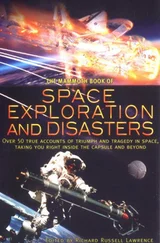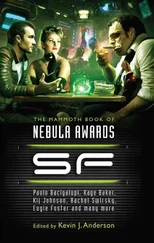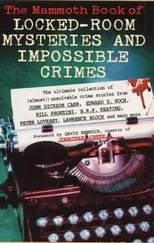Al Carder took no chances with the Skyrocket. The pressurizing gases – helium and nitrogen – were sieved through Kotex to make certain no insidious segment of dust was carried in the explosive fluids, an operation that explained why I had seen cartons of the incongruous supplies stacked in the hangar.
Carder had confidence in his men; they were trained well, yet he watched the serious business alertly, ready to intercede in case of an error. In his mind lay the whole flight plan; each of his assistants had been assigned various functions of the whole. While he watched the immediate operation, he was thinking ahead, anticipating what could go wrong and the consequent steps to be taken toward prevention. He was figuring how to save five minutes’ time in the expensive flight plan – methods of further ensuring its margin of safety.
Headlights flashed onto the field out of the darkness. The cars carrying the engineers, the technicians, and the pilot converged near the front of the hangar, ready to join the caravan that would begin its way slowly across the runway onto the parched, mosaically cracked clay lake.
Preceding the funeral-paced procession was the huge trailer carrying the Skyrocket, active as an atomic bomb, locked securely to its bed. Carder, a general leading a column of tanks, headed the fleet in a radio car. Through the mist that floated in long veils across the dead lake, the white plane was carried, with its entourage of green Douglas cars, a fire truck and an ambulance, into the early-morning light.
The red beacon at the end of the runway flashed green and we began to creep toward the point where the plane was to be unloaded, five miles ahead.
I sat beside Gene May in the back seat of the radio car. In the seat in front of us Carder was issuing last minute orders over the hand mike: “Metro One, this is Metro Six. From now until take-off transmit the wind direction, velocity and temperature every five minutes.” Metro One, a truck with a big, square, searching theodolite on its roof, had been stationed by Carder midway along the path of flight.
The truck answered, “Metro Six, this is Metro One… wind, velocity, and temperature every five minutes, right.” Carder was absorbed in the important details of the flight, preoccupied as though he were straining to remember something.
Straight ahead the faraway mountains were hidden by the mist – the edge of the huge lake on tall sides was lost by the vapor drifts. The ground we moved over was sterile as concrete, no weed, no green – it was difficult to maintain a sense of direction, we seemed to be a ship on a flat sea sliding across an empty clearing bordered by fog. As if by radar, the dreary little parade moved unfalteringly toward the end of the lake.
Another order from Carder: “Metro Two, this is Metro Six… we will be ready for the fire trucks in 30 minutes.” And at the hangar Metro Two called into the moving car, “We’ll have fire trucks alerted in 30 minutes.” If a program requires the use of more than one fire truck, the extra equipment is only sent at the time it is needed. Fire trucks on a test base are kept very busy and their standby time is allotted.
Between radio calls the project coordinator turned around in his seat to Gene May. “would you like a chase plane to take off and check the turbulence at your dive altitude?”
May rapidly shook his head, “No, the ‘school’ will have their planes up this morning, we can check with them.” The matter was no longer Al Carder’s responsibility; May had lifted this concern from Carder’s pile of important details.
Again Al Carder spoke into the radio, “George,” he called Mabry in one of the fleet of cars, “will you check the north-south runway for any debris?” The Skyrocket would eat up three miles of lake before she lifted off, a scrap of driftwood blown in off the desert onto her path would be enough to throw her off balance with her belly fat with explosives.
The ground wind came up cold now, clearing the mist away as we pulled to a stop. The deep blue of the sky was fading as the light of the morning brightened. The exact moment of sunup the plane was to leave the ground. The cars parked around the trailer a safe distance from the take-off point – the noise from the rocket engine would be loud enough to pop eardrums. Doors opened, the mechanics jumped to the ground and the Skyrocket was laboriously unloaded. Grotesquely the trailer “knelt” at the rear wheels so that the ship could be rolled off with its umbilical-cords still intact. Above the desert the only noise was the putt-putt-putt of the motors on the trailer and the incessant whistle escaping from the plane. Carder’s orders were spoken quietly, the mechanics spoke softly to one another, as if to keep from startling the restrained energy they worked around.
Every other minute the men who read the pressure gauges, intently as submarine captains, called out the pressures in the nitrogen tanks: “2,000 pounds” was called and verbally relayed to Carder – “2,000”… “2,000”… and down the line… “2,000.”
“Hold it at 2,000,” the order echoed back. By sunrise the white plane sat into the wind, still fed by its cords, not yet free. Now the pilot was called; he emerged from the radio car. A gladiator heading for the pit, he swaggered with confidence; the wind whipped his flight jacket around his tightly laced G suit. The size of his head was accentuated by the melon-shaped heavy crash helmet. It was a costume weird enough for the role he played, the narrowness of this body, in the form-fitting, olive drab covering was congruent with the uncluttered, narrow bullet waiting for him, steaming and puffing on the ground.
Gene May gave his orders, climbed the portable ladder into the tiny cockpit and yelled, “Okay, let’s wind this thing up.” The jet engine assisted in take-off with two of the four rocket tubes, was started whirling by the electric motor plugged into the side of the plane. A gentle, thin wheeeee-eee from the engine as the compressor started going and then the loud explosion that spit the flames out the tailpipe like red adders’ tongues. The hurricane blowing out the fanny dug a long rut in the lake bed in back of the Skyrocket. She shrieked like a pig in a slaughterhouse. Sign language was used now; the noise from the plane smothered all other sound. Above an F-80 shot over – the “chase” plane was in the air. He would follow the rocket ship, looking for trouble to report to its pilot. He was an eyewitness in case the ship didn’t come back. May made a sign, the canopy was closed. A loudspeaker was used now to communicate to the ground crew from the sealed cockpit in the Skyrocket. Carder sat with his assistant in the radio car holding the speaker that connected him directly to the pilot in the cockpit. He watched intently the last-minute activity around the plane – his runner would quickly deliver orders to the hustling men if he saw trouble.
From the cockpit radio Gene announced, “I’m pressurizing.” The news was repeated down the line: “he’s pressurizing”… “he’s pressurizing”… “he’s pressurizing.” Again from the howling plane came the magnified and unnatural-sounding voice, “Al, I’m ready to prime.” This announcement increased the tension in Al Carder; he leaned forward. Quickly the mechanics removed the lines and holes from the Skyrocket and for the first time this morning she was unleashed with her load. She steamed heavily – ready to go.
“What’s holding things up?” May’s sharp, rapid words fell.
Into the mike one of Carder’s men advised promptly, “Okay, Gene, you’ve got a good prime.”
The plane would climb with its jet engine, assisted by the two rocket tubes in take-off only, until 40,000 feet. May would then fire all four tubes to make his high-speed run.
Читать дальше












